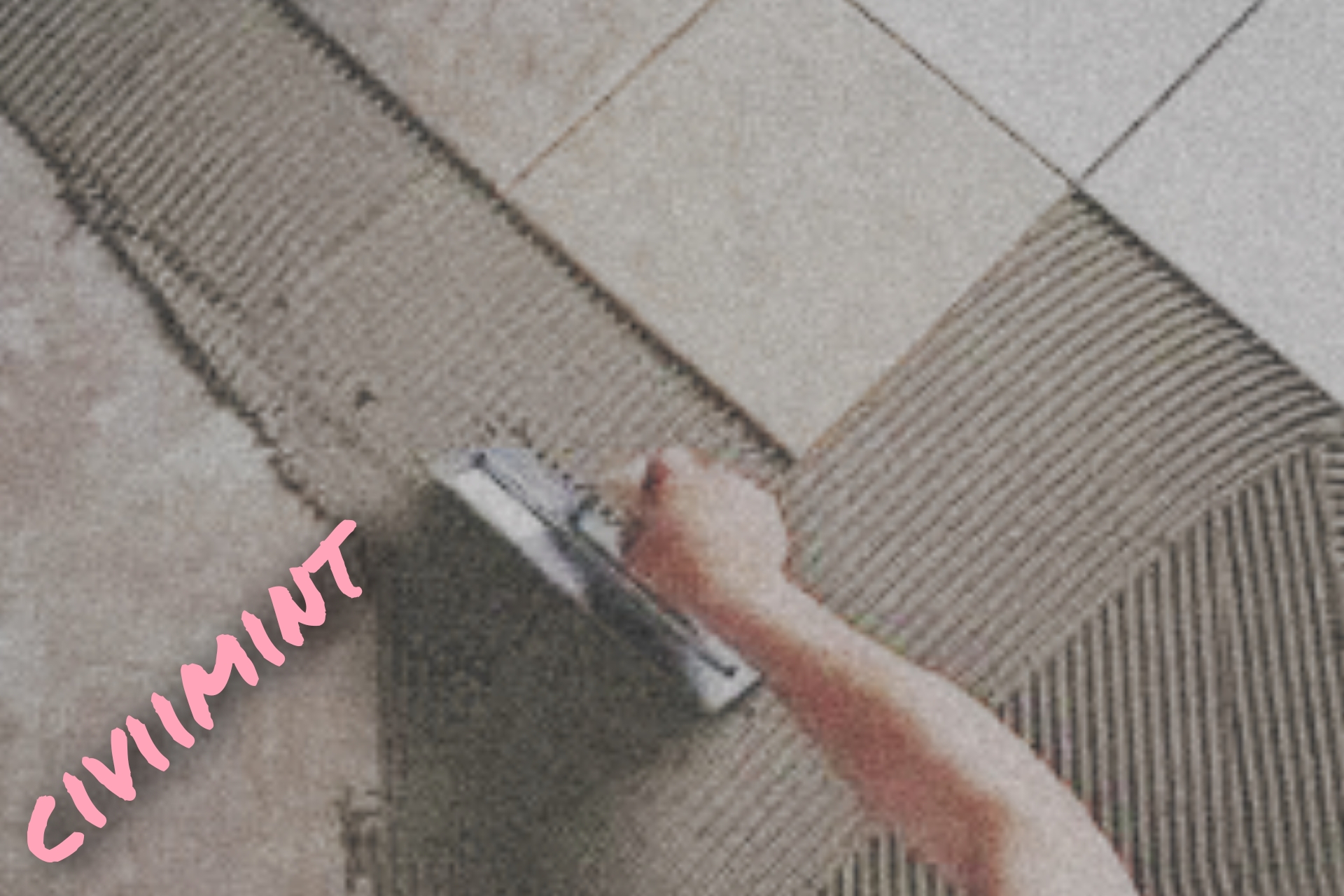Thinset is a tile adhesive material. It is commonly used for installing wall tiles. In this article I will fully describe about thinset.

Table of Contents
What Is Thinset?
Thinset is an adhesive mortar that is commonly used to attach tile or stone to surfaces like cement or concrete. It’s also known as thinset mortar, thinset cement, dryset mortar, or drybond mortar. A key component of thinset is a water-retaining agent, such as an alkyl derivative of cellulose.
Thinset is a popular choice among mosaicists for outdoor applications due to its durability and strength. It’s particularly effective at withstanding the weight and pressure of heavy materials, making it an ideal choice for tiling and stonework.
There are two types of thinset available in the market – unmodified and modified (polymer-modified).
Modified thinset has been specially designed to improve the strength of the bond while also enhancing the working conditions of the material. This includes factors such as working time, working temperature range, etc.
While modified thinset is more expensive than standard, unmodified thinset, it’s often preferred by builders and contractors due to its superior quality and performance.
Applications
Thinset mortar is a type of adhesive commonly used in tiling. It is specifically designed to attach tiles to a cement-based substrate, such as a concrete floor, cement backer board or waterproof membrane. Thinset is a reliable and effective adhesive that can be used to join tiles of almost any size and material to walls and floors.
A pointed trowel is often used to apply the thinset. This tool allows the installer to create grooves, or lines, in the thinset, which helps release air and ensure proper coverage. For larger tiles, it may be necessary to apply thinset to the back of the tile.
One advantage of using thinset mortar is that it is water resistant. This makes it particularly suitable for use in wet areas such as showers, toilet walls or backsplashes. In addition, thinset is known for its strength and durability, which helps ensure that the tiles stay securely attached over time.
Thin mortar is a versatile and reliable adhesive commonly used in tiling. It provides a strong and long lasting bond between tile and substrate, making it suitable for use in a variety of applications. Whether you’re installing small or large tiles, thinset is a great choice for a beautiful finish that will last for years to come.
Advantages
Thinset is a popular choice among DIY enthusiasts for a variety of reasons. One advantage of using thinset is that it is affordable and widely available, as it is made from readily available materials like cement and sand. This makes it more cost-effective than synthetic adhesives or glues that utilize advanced polymers, especially for larger projects such as tiling floors.
Another benefit of thinset is its ability to even out surfaces. Due to its consistency, it can easily fill in dips or irregularities in a subfloor. This creates a more consistent surface than would be possible with glue-based adhesives, particularly for smaller projects like backsplashes or inlays.
Thinset also has a longer set time than other tile adhesives, which might seem like a disadvantage but is actually advantageous. The longer set time provides additional working time to spread the mixture before it hardens in the bucket, giving the user more time to lay and adjust tiles for a perfect installation.
Once cured, thinset is more water-resistant than mastic or other tile adhesives, which makes it a good choice for commercial or industrial tile applications. Thinset can also be made chemical-resistant with the right additives.
Its ability to even out surfaces, longer set time, and water-resistant properties make it a popular choice among DIYers for tiling projects.
Disadvantages
Thinset is a popular material used for tile installation, however, there are certain situations where it may not be the best choice. Here are some of the disadvantages of using thinset:
One of the main disadvantages of using thinset is its inflexibility. Once it dries, it becomes very rigid, which means that any movement or flexing in the subfloor or substrate can cause the bond between the tile and the thinset to break. This is especially true when installing larger tiles, where uneven spreading of the thinset can cause the tile to pop loose when pressure is applied to one end.
In addition to its lack of flexibility, thinset may not be the most visually appealing option. It is typically gray in color and can look dull, which may not be desirable for certain tile installations, such as behind glass tiles. In these cases, white mastic may be a better choice, as it can highlight the color of the tile without drawing attention to the adhesive behind it.
Another potential issue with using thinset is that it may be too runny for certain applications. While it is suitable for use on walls, unmodified thinset may be too liquid for use on vertical tiles. In these cases, an installer may need to use a modified thinset, such as “low slump”, or a stickier material like mastic to hold the tiles in place.
Conclusion
Thinset is a very popular material for applying wall tiles. It is highly durable and strong. Thinset is the best option for walls where the chances of moisture are high.
